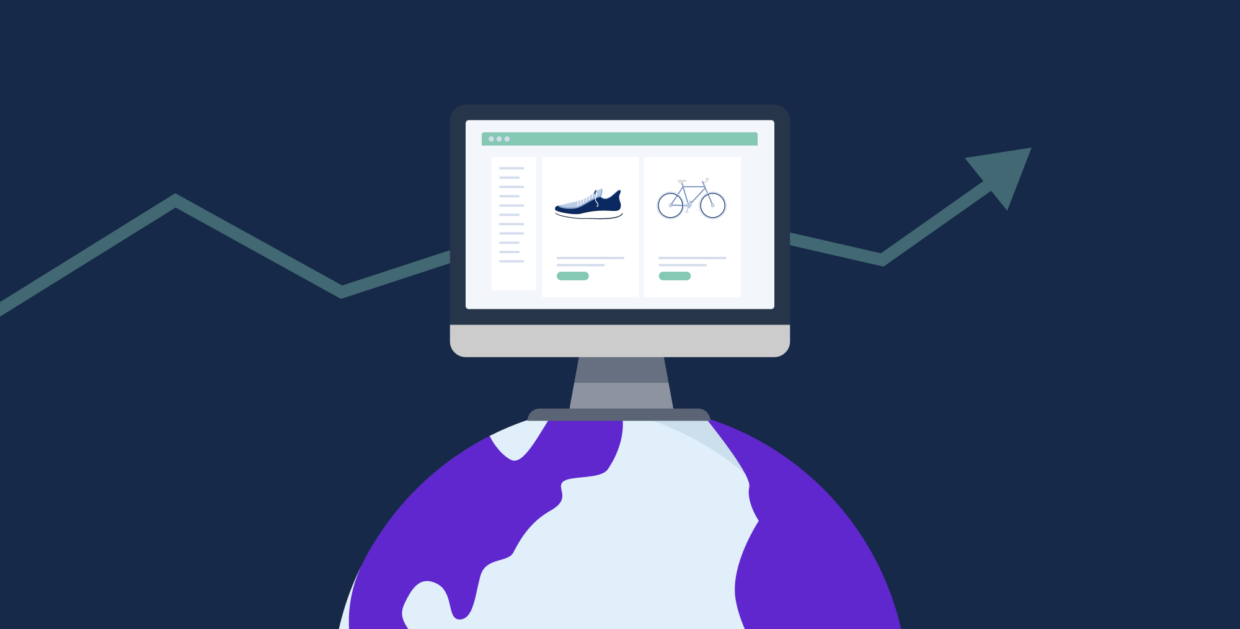
As the 2023 holiday season unfolds, it’s becoming increasingly evident how pivotal this period is for the global retail sector. Amidst evolving economic landscapes marked by inflation and supply chain complexities, consumer behavior is undergoing significant changes. Understanding these shifts is crucial for shippers and logistics professionals to navigate the season successfully.
This year, the ecommerce realm is not just about transactional efficiency but agile responses to global shopping trends. With insights from recent studies, this blog delves into how consumers worldwide are adapting their shopping habits and the ensuing impact on the shipping and logistics industry.
For e-tailers and ecommerce companies, staying ahead of these trends is essential for ensuring a smooth and profitable holiday season. Join us as we unpack the 2023 holiday shopping trends and their implications for the ecommerce and shipping industries.
Global Economic Influences on Shopping Trends
The 2023 holiday season is unfolding against various global economic challenges that significantly influence consumer spending habits. Inflation rates and job market conditions point to unique challenges for retailers and consumers alike. Retail sales are expected to surpass $1.6 trillion by 2027, signaling positive trends for the retail sector. However, current economic factors like inflation and job market conditions bring uncertainty. This year, more than ever, there’s a palpable sense of financial squeeze affecting consumer decisions.
Amidst these economic headwinds, retailers are required to navigate choppy waters. The end of COVID assistance programs in the United States, for example, impacts disposable income levels, especially for those affected by the reinstatement of student loan payments. These changes are echoed globally, leading to a shift in spending patterns and shopping priorities.
This economic landscape shapes a complex scenario for ecommerce companies. Understanding these global economic influences is key to strategizing shipping solutions that align with the evolving needs of both retailers and consumers in the ecommerce realm.
Discover the market trends and consumer behaviors that are shaping delivery expectations for 2023 in ShipEngine’s Peak Season Projections report.
Consumer Responses to Economic Pressures
In response to the economic pressures outlined, consumers worldwide are adjusting their holiday shopping strategies. As per insights from Host Merchant Services, there’s a notable trend of consumers seeking better value in the face of rising inflation. This consumer sentiment has led to a shift towards more budget-conscious decisions, with a significant portion of shoppers modifying their budgets to accommodate higher prices. 79% of consumers are making more budget-conscious choices this year, according to a report from McKinsey.
Retailers like Walmart and Target are responding by offering more budget-friendly options and holiday promotions. The drive for cost-effectiveness extends into the realm of ecommerce, influencing how consumers approach online shopping and what they prioritize. For logistics professionals, these consumer adjustments underscore the importance of offering versatile and efficient shipping solutions that cater to the changing dynamics of ecommerce spending.
Adapting to these budgetary shifts is crucial for maintaining a robust shipping strategy, ensuring that businesses can effectively meet the diversified needs of a cost-conscious consumer base.
Adaptations in Retail Strategies
In response to the evolving consumer landscape, retailers are making strategic adjustments. They’re focusing on inventory management and embracing cost-effective options to cater to budget-conscious consumers. As highlighted by Forbes, retailers are utilizing intelligent pricing strategies, using data analytics and AI to dynamically adjust prices based on consumer behavior and market trends.
These strategies are not only about responding to immediate market signals but also about fostering long-term customer loyalty. For ecommerce, this means aligning shipping solutions with retail and pricing strategies and ensuring that delivery services are efficient, cost-effective, and adaptable to the fast-changing retail environment.
Technological Advancements in Shopping
The role of technology in shaping the ecommerce landscape is more prominent than ever. With the increasing use of AI and predictive analytics, retailers are enhancing the online shopping experience through personalized and engaging campaigns. Additionally, the rising popularity of ‘Buy Now, Pay Later’ services is offering consumers more flexibility in their purchasing decisions.
Staying abreast of these technological advancements is crucial as it allows for the integration of innovative shipping solutions that align with the evolving preferences and behaviors of consumers, ensuring that the logistics infrastructure can support and enhance the modern online shopping experience.
Discover the market trends and consumer behaviors that are shaping delivery expectations for 2023 in ShipEngine’s Peak Season Projections report.
Navigating the New Ecommerce Landscape with ShipEngine
The insights from the 2023 holiday shopping season underscore the importance of agility, innovation, and a deep understanding of global consumer trends for success in ecommerce and logistics. Balancing economic challenges, consumer preferences, and technological advancements is essential in this evolving retail era.
Adapting to these dynamic market conditions requires continuously evolving shipping solutions for ecommerce companies. ShipEngine stands at the forefront of this adaptation, offering robust and flexible shipping tools tailored for the ecommerce sector. By leveraging ShipEngine’s capabilities, businesses can effectively navigate the seasonal shifts, ensuring they meet the current demands of the ecommerce landscape while setting a strong foundation for future success in a constantly changing retail world.

Leave a Reply